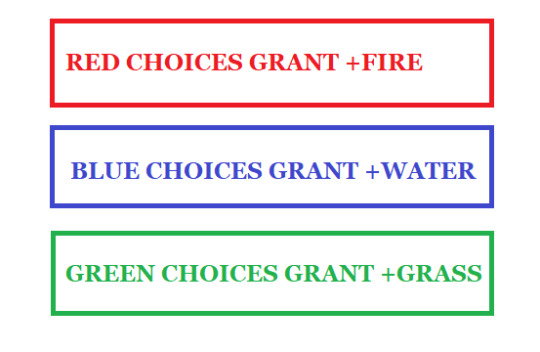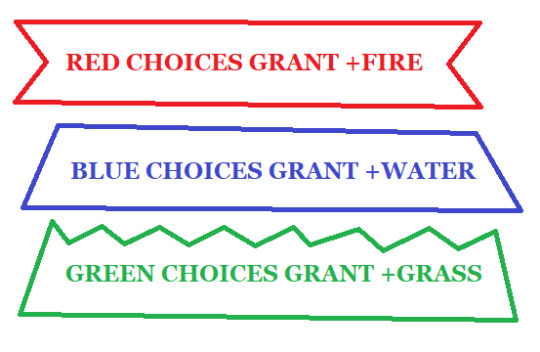#Resource Allocation
Explore tagged Tumblr posts
Text

"Markets are not perfect, but they are the most efficient and fair mechanism for resource allocation."
26K notes
·
View notes
Note
Hello, can I ask how difficult is for developers to add accessibility features to games? I am aware it probably varies by type. Recently, I asked if a sound only minigame in one video game could be reworked to add visual cues, as I am deaf. Lot of other fans harped on me its too much work for little gain, too difficult, that it takes away precious developers time, etc. So now I wonder how complicated such thing actually is and how devs view it. Thank you.

They're not wrong in that building such things isn't free. However, you're also right in that we on the dev side should be thinking about better ways of doing this - there isn't only one solution to these problems. Whatever final solution we implement doesn't have to be the most expensive means of doing so. It's actually up to us to think of better/more efficient ways of doing the things we want to do. Adding accessibility options is often a worthy goal, not only to the players who need those options to be able to play, but also for general quality-of-life. If we're making changes after the fact, of course they're super expensive. If accessibility options are a production goal that we plan for, they're much cheaper because we don't have to redo work - we do it with accessibility in mind in the first place.
For example - let's say that we're working on UI and we have this system:

Let's say that we want to improve things for colorblind players. If we wanted to make this more accessible, instead of just using color to differentiate the choices, we could also add different border visuals to provide additional context.

In such a situation, the difference in choices is still obvious if you're colorblind and it helps legibility for non-colorblind players as well.

These kinds of UX changes can be expensive if we decide to do it after the fact, but if it's something we decide is important to us from the jump we can compensate for those costs by creating efficient and smart solutions early. Remember, the cost of any change in game development is directly proportional to how close that change is to shipping the game. The earlier the change is made, the cheaper it is. Furthermore, we make resource allocation choices based on our goals. If we want to make a game more accessible, we will figure out a way to do so that fits within our budget and provides a good player experience. Players don't really have a say in how we allocate our resources and that kind of armchair producer talk isn't particularly constructive anyway. Telling us what's important to you and why (including accessibility requests) is really the best kind of feedback we can hope for. Don't sweat coming up with the solutions or fretting about where we spend resources, that's our job.
[Join us on Discord] and/or [Support us on Patreon]
Got a burning question you want answered?
Short questions: Ask a Game Dev on Twitter
Long questions: Ask a Game Dev on Tumblr
Frequent Questions: The FAQ
147 notes
·
View notes
Text
Understanding Partially Public Goods: Excludability and Rivalry
There are several things that could potentially be considered public goods but are not due to various reasons. These goods may be excludable (meaning access can be restricted) or rivalrous (meaning consumption by one person reduces availability to others) to some extent. Here are some examples:
Broadcast Television: While television broadcasts are non-excludable (many people can watch the same program simultaneously), they are not entirely non-rivalrous. Limited advertising space and time slots mean that the more viewers a program attracts, the more revenue it generates. Therefore, broadcast television is not a pure public good.
WiFi in Public Spaces: Publicly available WiFi in parks or airports is often considered a public good because anyone can access it freely. However, it can be limited by factors such as bandwidth, speed, and user restrictions, making it partially excludable and rivalrous to some extent.
Clean Air: Clean air is typically regarded as a classic public good because it is non-excludable and non-rivalrous. However, localized air pollution can affect air quality in specific areas, making it somewhat rivalrous on a regional scale.
Public Transportation: Public transportation systems aim to provide accessible services to everyone. Still, they are not entirely non-excludable, as users typically need to pay fares, and they can become congested during peak hours, introducing rivalry for seating and space.
Online Information: Information on the internet is often considered a public good because it can be freely accessed by anyone. However, some content is protected by paywalls, and high-quality, specialized information may require subscriptions or fees, making it partially excludable.
National Parks: National parks are intended to provide natural beauty and recreational opportunities to all. However, access to some areas may require entrance fees or permits, rendering them partially excludable.
Social Media Platforms: Social media platforms like Facebook and Twitter offer free access to users worldwide. However, they are not pure public goods because users' data and content contribute to their revenue through advertising and data monetization.
In these examples, the classification of goods as public or non-public depends on factors like the degree of excludability and rivalry. While they exhibit some characteristics of public goods, they are not entirely non-excludable and non-rivalrous, which is the hallmark of pure public goods like clean air or national defense.
#philosophy#epistemology#knowledge#learning#education#chatgpt#ethics#politics#Public Goods#Excludability#Rivalry#Economic Concepts#Market Efficiency#Resource Allocation#Accessible Services#Common Resources#Public Policy#Goods Classification#economics
2 notes
·
View notes
Text
My issue here is not that some of my earned money goes to help poor people. I would do that voluntarily (and in fact, did that just today).
My issue here is that rich people are the ones who take my money while insisting that it's going to help the poor.
I already help the poor when I can. I don't need a-hole politicians taking a cut of my earnings with warm promises of it being used for good. I know directly where and who I handed my money to.
To the guy on a motorized cart who needed $2 to buy milk.
To the guy who was kicked out of his assisted living home because one of the residents stabbed and killed another resident, thereby deeming the entire complex a crime scene and leading to him being turned to the streets. There weren't enough facilities available to accommodate him. So now he's on the streets, homeless and being told that, in order to get govt assistance, he needs to develop a drug addiction, which he (rightfully) refuses to do.
So when the govt takes a portion of my paycheck 'prima facie' with reason given saying that it is for the betterment of society, forgive me for being doubtful.
I do use a portion of my earned money to help people, and I know it for a fact because I do it myself regularly.
I do NOT, however, know for a fact that rich a-holes from within the government will use that appropriated money to better my community and those within it that continue to struggle.
According to the very image presented, an inordinately justifiable amount of money collected from our paychecks is going to cushion large corporation's interests.
So, the issue you truly have is not what I choose to do with my own money. But rather, with how the government chooses how that confiscated money is allocated. Is this an accurate summary?

#government#socialism#free enterprise#poor#money#finance#resource allocation#i gave a homeless man named travis some cash today#his story checked out#i don't need some gross politician to talk to me like a child#demanding that i have compassion for others#just so that they can pretend that they're a good person#when their whole agenda is based on exploitation of people's desires
120K notes
·
View notes
Text
Time is our most precious resource, more valuable than any amount of money. This post explores how understanding and respecting the value of time can revolutionize your approach to life and business. #TimeManagement #BusinessGrowth #Productivity
#business#Business Growth#business productivity#business relationships#efficiency#entrepreneurship#Innovation#leadership#opportunity cost#personal development#personal-development#productivity#resource allocation#strategic planning#success#time management#value of time#Work-Life Balance
0 notes
Text
Zetan Research: New California Republic (NCR) Edition...
New California Republic (NCR)
Frontier Observations
Numerous NCR Rangers have reported unmarked UFO crash sites along the Mojave frontier, but there is no evidence of an organized, state-level Zetan research division within the Republic’s bureaucracy. Alien Species
Resource Allocation
With the NCR’s focus on territorial stabilization and dam reconstruction, funds and personnel have never been diverted toward sustained alien scientific inquiry—sightings are treated as a localized curiosity rather than a strategic priority. Fallout Wiki
#fallout#pre-war#post-war#New California Republic#Research#NCR#Zetan#Zetans#Aliens and UFOs#Reverse-Engineering#Resource allocation#Alien species#Mojave Wasteland#Office of Science and Industry#OSI
1 note
·
View note
Text
Corporate Strategy vs. Business Strategy: Understanding the Key Differences

In today’s highly competitive business environment, companies must have a well-defined strategic approach to sustain growth, maintain market leadership, and drive innovation. However, many executives and business leaders often confuse corporate strategy with business strategy, using the terms interchangeably. While both play a crucial role in an organization’s success, they operate at different levels and serve distinct purposes.
This article explores the fundamental differences between corporate strategy and business strategy, outlining their key components, objectives, and how they complement each other in driving organizational success.
Understanding Corporate Strategy
Corporate strategy is the highest level of strategic planning that defines the overall direction of an organization. It focuses on long-term goals, investment decisions, resource allocation, and managing a portfolio of businesses. Typically formulated by the board of directors and top executives, corporate strategy determines how a company creates value across its various business units.
Key Components of Corporate Strategy

Portfolio Management: Large corporations often own multiple business units across different industries. Corporate strategy ensures that these units complement each other and drive overall profitability.
Growth and Expansion Strategy: Decisions related to mergers, acquisitions, divestitures, and entering new markets fall under corporate strategy.
Resource Allocation: The company determines how to distribute financial and human resources across various business divisions for optimal performance.
Risk Management: Corporate strategy helps mitigate risks by diversifying investments and ensuring a balanced revenue stream.
Mission, Vision, and Values: The strategic direction of the organization is set through clear mission and vision statements that align with long-term objectives.
Example of Corporate Strategy
Consider a conglomerate like General Electric (GE) or Amazon, which operates in multiple industries. GE’s corporate strategy involves managing its diverse businesses in aviation, healthcare, and renewable energy. Decisions such as divesting from GE Capital or investing in AI-powered industrial automation are part of its corporate strategy.
Understanding Business Strategy
While corporate strategy operates at the top level, business strategy focuses on how individual business units compete within their respective industries. It is concerned with gaining a competitive advantage, increasing market share, and improving profitability within a specific market segment.
Unlike corporate strategy, which is concerned with overarching goals, business strategy is more operational and directly impacts revenue generation and market positioning.
Key Components of Business Strategy

Competitive Advantage: Companies define how they will differentiate themselves from competitors—through cost leadership, differentiation, or focus strategies.
Market Positioning: Business strategy determines how a company presents its products or services to target customers.
Operational Efficiency: Streamlining processes, improving supply chain management, and optimizing pricing models fall under business strategy.
Customer Engagement: Understanding customer behavior, needs, and preferences to improve satisfaction and brand loyalty.
Revenue Growth Strategies: Expansion through product innovation, pricing strategies, or geographic expansion.
Example of Business Strategy
Consider Tesla, which operates under the corporate umbrella of Tesla, Inc. While Tesla’s corporate strategy focuses on global expansion and sustainability, its business strategy for its electric vehicles division revolves around innovation, premium branding, and direct-to-consumer sales.
Key Differences Between Corporate Strategy and Business Strategy

How do Corporate and Business Strategies Work Together?
A well-defined corporate strategy ensures that all business units align with the company’s overall objectives. In contrast, an effective business strategy allows each unit to operate successfully within its market, contributing to the organization’s broader goals.
For instance, Apple Inc.’s corporate strategy focuses on maintaining innovation leadership across various sectors, including smartphones, wearables, and services. Meanwhile, its business strategy for the iPhone division involves premium pricing, exclusive branding, and ecosystem integration to sustain competitive advantage.
Choosing the Right Strategy for Your Organization

For businesses to thrive, leaders must distinguish between corporate strategy and business strategy while ensuring that both work in harmony. Here are some considerations:
Startups and Small Businesses: If you operate a single business unit, focus on business strategy to gain market traction and build a competitive edge.
Mid-Sized Companies Expanding: As companies grow, they should develop a corporate strategy to explore diversification, new markets, and acquisitions.
Large Enterprises and Conglomerates: Established corporations require both strategies to ensure efficient management of multiple business divisions while maintaining industry leadership.
Conclusion
While corporate strategy and business strategy are distinct concepts, they are interdependent. Corporate strategy defines the company’s overarching vision, resource allocation, and expansion plans, while business strategy determines how each unit competes within its market.
For business leaders, entrepreneurs, and C-suite executives, understanding these differences is crucial for making informed decisions that drive growth, innovation, and long-term success. A well-balanced approach to both strategies ensures that businesses remain competitive while achieving their corporate objectives.
By mastering both corporate strategy and business strategy, organizations can navigate market uncertainties, seize new opportunities, and create sustainable value for stakeholders in an ever-evolving business landscape.
Uncover the latest trends and insights with our articles on Visionary Vogues
#Corporate strategy#business strategy#competitive advantage#growth strategy#market positioning#organizational success#resource allocation
0 notes
Text
Maximizing warehouse space is key to boosting efficiency and cutting operational costs. With the rise of e-commerce and growing demand for faster delivery times, businesses must optimize their warehouse storage and operations. One effective approach to unlocking logistics and warehouse potential is improving the layout and design.
0 notes
Note
There was a popular video a few years back (What games are like for someone who doesn't play games). It struck me as a gamer because of how much unwritten "gamer intuition" that we just learned over time and tutorials sometimes seem to take this for granted (ie Day9's criticism of Tears of the Kingdom). What do gamedevs keep in mind when crafting a tutorial for gamers but also for newcomers to gaming or the genre of the game?

Most game dev teams have a strong idea of who our game's target audience is, and that includes the kind of context they should already have. If we're building a big budget AAA first person shooter, we can expect that our representative player recognizes and likes first person shooters and is likely already familiar with the basics of how to play them. It is unlikely we will need to teach them the very basics like how to move about the map and aim or what strafing is. If we're building a casual mobile game where we expect our representative player is new to games and lacks the context needed to play, we'll need to spend more effort to teach them that context.

The need for tutorialization is especially high in two major cases:
When introducing new kinds of gameplay for which there the player doesn't have much or any existing context from other games or real life. Players have no context for the new gameplay, so they need to be taught much more carefully so they can learn. If you've ever seen a player play Dance Dance Revolution for the first time, you'll see what I mean - there's a lot of awkwardness before they start to look more comfortable with playing it. Final Fantasy 13's role change system was similar - it was so significantly different from conventional wisdom that the tutorial elements were spread out over many hours in order to get players familiar with it.
When introducing gameplay that specifically conflicts with conventional wisdom. Players already have habits, conventions, and muscle memory associated with that kind of gameplay, so having things work differently will require a lot of unlearning the old habits in order to learn the new ones. If anyone's played the first Mass Effect, you'll probably understand - the aiming and reticle system in Mass Effect 1 is a façade. Putting the crosshairs on a target's head and firing will not guarantee a headshot, even with a sniper rifle. This choice broke a lot of established shooter conventions and caused significant player confusion.

In these situations, it is a good idea to spend significantly more resources on tutorials than games with more traditional gameplay. We, unfortunately, don't always get the resources to do that. In those cases, it ends up hurting the game's reception because players will often miss the features entirely and then complain they aren't there.
[Join us on Discord] and/or [Support us on Patreon]
Got a burning question you want answered?
Short questions: Ask a Game Dev on Twitter
Long questions: Ask a Game Dev on Tumblr
Frequent Questions: The FAQ
47 notes
·
View notes
Text
Boosting Team Efficiency: Task Management for Collaborative Success
In today's fast-paced work environment, effective task management is crucial for enhancing team efficiency and driving collaborative success. Implementing structured task management systems allows teams to prioritize responsibilities, track progress, and streamline communication. By utilizing tools that foster transparency and accountability, teams can allocate resources effectively, ensuring that everyone is aligned with project goals. Moreover, fostering a culture of open communication and regular feedback helps in identifying potential roadblocks early on, enabling proactive problem-solving. Ultimately, efficient task management not only boosts productivity but also cultivates a motivated and cohesive team dynamic, leading to successful project outcomes.
More info: https://ahalts.com/products/hr-management

#task management#team efficiency#collaborative success#project management#team collaboration#productivity tools#communication strategies#resource allocation#team dynamics
0 notes
Text
The Crucial Role of a General Contractor in Achieving Project Success

A general contractor serves as the cornerstone of any construction project, ensuring that each phase—from initial planning to the final touches—runs seamlessly. They are responsible for managing a web of complex details, coordinating diverse teams, and solving the inevitable challenges that arise. By keeping the bigger picture in mind while paying close attention to the fine details, the contractor ensures that the project is delivered on time, within the budget, and to a high standard of quality.
Overseeing the Entire Construction Journey
A general contractor’s job is to orchestrate the entire construction journey. They coordinate the efforts of architects, engineers, and subcontractors to ensure that every moving part of the project aligns smoothly. Their task goes beyond managing individual teams; they are responsible for crafting detailed schedules and budgets that act as the blueprint for the project’s progress. By overseeing every phase from start to finish, they ensure the construction stays on course, avoiding any delays or inefficiencies that could derail the project.
Navigating Building Codes and Regulations
An often overlooked but critical duty of the general contractor is ensuring that the project adheres to local building codes and safety regulations. These rules are in place to guarantee the safety and integrity of the structures being built. A general contractor must stay informed about the latest legal requirements, obtain the necessary permits, and make sure the project passes all required inspections. By doing so, they shield the client from legal or financial complications while ensuring the structure meets safety standards.
Balancing the Project's Budget
Effective budget management is central to a general contractor’s responsibilities. Whether it’s sourcing materials or managing labor costs, the contractor must keep a close watch on expenditures to ensure that the project doesn’t exceed the financial boundaries set by the client. This role demands exceptional organizational skills and the ability to negotiate favorable terms with suppliers. Keeping the project within its financial scope not only avoids unnecessary expenses but also ensures that the client remains confident in the contractor's ability to deliver within the agreed-upon budget.
Upholding Quality and Deadlines
Delivering a project that not only meets but surpasses expectations is a core element of a general contractor’s work. Their role involves consistently monitoring the construction site, checking that each aspect of the build matches the project’s specifications, and confirming that only top-tier materials are used. This dedication to detail helps guarantee that the final product is not just completed on schedule but also exceeds the client's standards in terms of quality and durability.
Mastering the Many Facets of Construction Leadership
A general contractor is the essential leader in any construction project, balancing technical skills, strong leadership, and financial insight. By managing the flow of the construction process, ensuring compliance with laws and regulations, and keeping tight control over both the budget and quality, the contractor plays an indispensable role in transforming the client’s vision into a successful, completed project.
#general contractor#construction management#project scheduling#resource allocation#subcontractor coordination#time management#cost control#building efficiency
0 notes
Text
Revolutionizing Resource Management with Artificial Intelligence

The landscape of resource management is undergoing a profound transformation, driven by the rapid advancement of Artificial Intelligence (AI). Traditional methods of managing resources—be it human, financial, or material—are increasingly being supplemented, and in some cases replaced, by AI-powered solutions. This revolution promises to enhance efficiency, reduce waste, and optimize resource utilization across various sectors.
The Role of AI in Resource Management AI's role in resource management is multifaceted, encompassing predictive analytics, automation, and real-time decision-making. These capabilities are instrumental in addressing the complexities and inefficiencies inherent in traditional resource management practices.
Predictive Analytics: Anticipating Needs and Trends One of AI's most powerful applications is its ability to perform predictive analytics. By analyzing historical data, AI systems can forecast future trends and needs with remarkable accuracy. In inventory management, for example, AI can predict demand fluctuations based on factors like seasonal trends, market dynamics, and consumer behavior. This foresight enables companies to maintain optimal inventory levels, reducing the risk of overstocking or stockouts.
Similarly, in workforce management, AI can predict staffing needs by analyzing past data on employee performance, workload, and business activity. This helps organizations to schedule shifts more effectively, ensuring that the right number of employees are available at the right times.
Automation: Streamlining Repetitive Tasks Automation is another critical aspect of AI's impact on resource management. By automating repetitive and time-consuming tasks, AI frees up human resources to focus on more strategic and value-added activities. In the realm of financial management, for instance, AI can automate processes such as invoice processing, expense reporting, and budgeting. This not only speeds up these tasks but also reduces the risk of human error.
In human resource management, AI can automate the recruitment process by screening resumes, scheduling interviews, and even conducting initial assessments. This streamlines the hiring process, allowing HR professionals to dedicate more time to strategic planning and employee development.
Real-Time Decision Making: Enhancing Responsiveness AI excels at processing vast amounts of data in real-time and providing actionable insights, a capability that is particularly valuable in dynamic environments. In manufacturing, AI systems can monitor equipment performance continuously, predict potential failures, and suggest preventive maintenance actions. This proactive approach minimizes downtime and extends the lifespan of machinery.
In project management, AI provides real-time updates on resource allocation, project progress, and potential risks. This enables project managers to make informed decisions swiftly, ensuring that projects stay on track and within budget.
AI in Various Sectors The benefits of AI-driven resource management are being realized across multiple sectors, each leveraging AI's capabilities in unique ways.
Healthcare In healthcare, AI optimizes both patient care and administrative operations. AI algorithms can predict patient admission rates, helping hospitals manage bed occupancy and staffing levels more effectively. Additionally, AI can assist in scheduling surgeries and other medical procedures, ensuring the optimal use of medical resources.
Energy The energy sector also stands to gain significantly from AI. AI can predict energy consumption patterns, enabling better management of energy resources and reducing waste. Moreover, AI can optimize power grid operations by forecasting demand and supply fluctuations, leading to more efficient energy distribution.
Agriculture AI is revolutionizing agriculture by promoting more sustainable resource management practices. AI can analyze soil conditions, weather patterns, and crop health to optimize irrigation, fertilization, and pest control. This results in higher crop yields and more efficient use of resources like water and fertilizers.
Challenges and the Path Forward Despite its immense potential, the integration of AI in resource management is not without challenges. Data privacy and security concerns are paramount, as AI systems require access to large volumes of sensitive information. Additionally, the implementation of AI technologies can be costly and necessitates significant investment in infrastructure and training.
Nevertheless, the future of resource management with AI is bright. As AI technology continues to advance, it will become more accessible and affordable, allowing even small businesses to reap its benefits. Improved AI transparency and explainability will also help address concerns about trust and reliability, making it easier for organizations to adopt AI-driven solutions.
Conclusion Artificial Intelligence is revolutionizing resource management, offering unprecedented levels of efficiency, accuracy, and responsiveness. By harnessing the power of predictive analytics, automation, and real-time decision-making, AI is transforming how organizations manage their resources. As we move forward, AI will play an increasingly pivotal role in ensuring that resources are used more wisely and sustainably, heralding a new era of intelligent resource management.
1 note
·
View note
Text
21st Century Time Management Techniques for Project Managers
Discover essential time management strategies for project managers to meet deadlines and stay within budget! Learn from Hafsa Reasoner on Empowered Journey. Don't miss out—subscribe now for more insights on mastering project management in the 21st Century
#21stcenturyprojectmanagement#delegationInProjectManagement#EffectiveCommunication#EmpoweredJourney#HafsaReasoner#meetingDeadlines#ProfessionalDevelopment#projectmanagement#projectManagementSoftware#resourceallocation#riskmanagement#scopeCreep#selfManagement#stayingWithinBudget#strategicPlanning#TimeManagement#21st century project management#delegation in project management#effective communication#Empowered Journey#Hafsa Reasoner#meeting deadlines#professional development#project management#project management software#resource allocation#risk management#scope creep#self-management#staying within budget
0 notes
Text
What is the Bucket Method in Savings and How Can It Help You Achieve Your Financial Goals?
There is a wide variety of methods or techniques you can use to grow your wealth. It can be as simple as keeping loose change in a piggy bank or as complex as investing in stocks. However, if you’re looking for an efficient way to achieve your financial goals, consider using the bucket method. This approach to saving and managing money involves dividing funds into separate “buckets” based on…
#bucket method#digital banks#financial discipline#financial goals#financial literacy#financial literacy campaign#investment strategies#Maya app#money-saving strategy#resource allocation#wealth growth
0 notes
Text
What is Resource Allocation? A Comprehensive Guide for Project Success
Competent resource allocation plays a vital role in the timely completion and delivery of projects. It helps businesses optimize their project management processes, improve employee productivity, and ultimately boost their bottom line. Dive into our blog to learn about the essential aspects and objectives of resource allocation. Read now!
0 notes
Text
Keeping track of inventory can be a daunting task, but with U R FIRST Logistics, efficient organization is within reach. Our expertise in logistics and warehouse management ensures that your inventory is accurately tracked and managed. By implementing streamlined systems and advanced technology, we make sure that your inventory is never out of sight.
0 notes